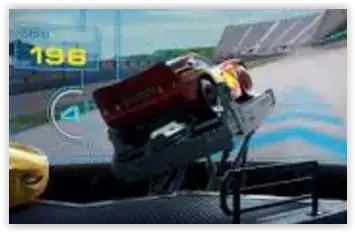As part of maintenance we need to keep the cars in check, which includes monthly driving on the road for X miles depending on the car/model. Please avoid trying to prove this process is obsolete, it is part of the QC process for all cars in the collection. Which might bring us to this post:
Do fast cars need to occasionally be driven fast?
I am not questioning if this is useful or not. Question is, can dynamometers be used to simulate driving for long ranges at various speeds for many hours? If not, are there other solutions you can think of?
Solution might resemble this Cars 3 movie screenshot, where they drive on simulators. Of course in our case, there is no need for giant screen, nor for base that moves around to simulate road curves.
At the moment this "driving QC" step is done by actually driving the car around for hours on public roads, which increases wear and tear, and risk of accidents. If relevant, collection includes top end luxury and racing cars.
